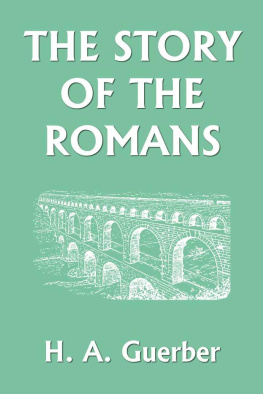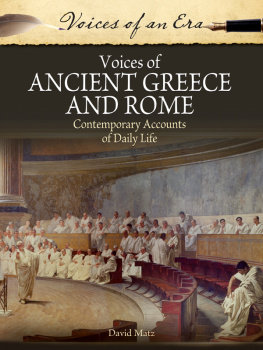
DOVER BOOKS ON ANTHROPOLOGY AND FOLKLORE
ANTHROPOLOGY AND MODERN LIFE, Franz Boas. (0-486-25245-0)
THE AUTOBIOGRAPHY OF A KIOWA APACHE INDIAN, Charles S. Brant (ed.). (0-486-26862-4)
MEGALITHS, MYTHS AND MEN: AN INTRODUCTION TO ASTRO-ARCHAEOLOGY, Peter Lancaster Brown. (0-486-41145-1)
DWELLERS ON THE NILE, E. A. Wallis Budge. (0-486-23501-7)
LETTERS AND NOTES ON THE MANNERS, CUSTOMS AND CONDITIONS OF THE NORTH AMERICAN INDIANS, George Catlin. (0-486-22118-0, 0-486-22119-9). Two-volume set.
NORDIC GODS AND HEROES, Padraic Colum. (Available in U.S. only.) (0-486-28912-5)
GAMES OF THE NORTH AMERICAN INDIANS, Stewart Culin. (0-486-23125-9)
HERO-TALES OF IRELAND, Jeremiah Curtin. (0-486-40909-0)
MYTHS AND FOLK-TALES OF IRELAND, Jeremiah Curtin. (0-486-22430-9)
MYTHS AND FOLK-TALES OF THE RUSSIAN, WESTERN SLAVS, AND MAGYARS, Jeremiah Curtin. (0-486-40905-8)
MYTHS AND LEGENDS OF JAPAN, F. Hadland Davis. (0-486-27045-9)
LIFE IN ANCIENT EGYPT, Adolf Erman. (0-486-22632-8)
AFRICAN GENESIS: FOLKTALES & MYTHS OF AFRICA, Leo Frobenius & Douglas C. Fox. (0-486-40911-2)
CUCHULAIN OF MUIRTHEMNE: THE STORY OF THE MEN OF THE RED BRANCH OF ULSTER, Lady Gregory. (0-486-41717-4)
THE MYTHS OF GREECE AND ROME, H. A. Guerber. (0-486-27584-1)
MYTHS OF THE NORSEMEN, H. A. Guerber. (0-486-27348-2)
HANDBOOK OF THE INDIANS OF CALIFORNIA, A.L. Kroeber. (0-486-23368-5)
THE MEXICAN KICKAPOO INDIANS, Felipe A. Latorre and Dolores L. Latorre. (0-486-26742-3)
PRE-COLUMBIAN DESIGNS FROM PANAMA, Samuel Kirkland Lothrop. (0-486-23232-8)
AMERICAN INDIAN BASKETRY, Otis Tufton Mason. (0-486-25777-0)
CHRISTMAS CUSTOMS AND TRADITIONS, Clement A. Miles. (0-486-23354-5)
THE GHOST-DANCE RELIGION AND WOUNDED KNEE, James Mooney. (0-486-26759-8)
PATTERNS AND CEREMONIALS OF THE INDIANS OF THE SOUTHWEST, Ira Moskowitz and John Collier. (0-486-28692-4)
Paperbound unless otherwise indicated. Available at your book dealer, online at www.doverpublications.com, or by writing to Dept. 23, Dover Publications, Inc., 31 East 2nd Street, Mineola, NY 11501. For current price information or for free catalogs (please indicate field of interest), write to Dover Publications or log on to www.doverpublications.com and see every Dover book in print. Each year Dover publishes over 500 books on fine art, music, crafts and needlework, antiques, languages, literature, childrens books, chess, cookery, nature, anthropology, science, mathematics, and other areas.
Manufactured in the U.S.A.
A Bacchante
Lord Leighton
(See page 151)

This Dover edition, first published in 1993, is an unabridged republication of the work originally published under the title The Myths of Greece & Rome: Their Stories, Signification, and Origin by George G. Harrap & Company, London, in 1907. The order and position of many of the illustrations have been altered for the present edition.
Library of Congress Cataloging-in-Publication Data
Guerber, H. A. (Hlne Adeline), d. 1929.
The myths of Greece and Rome / by H.A. Guerber.
p. cm.
Originally published: London: G.G. Harrap, 1907.
9780486120157
1. Mythology, Classical. I. Title.
BL721.G8 1993
292.13dc20
92-40392
CIP
Manufactured in the United States by Courier Corporation
27584110
www.doverpublications.com
PREFACE
T HE myths of Greece and Rome have inspired so much of the best thought in English literature that a knowledge of them is often essential to the understanding of what we read.
When Byron calls Rome, says Thomas Bulfinch, the Niobe of nations, or says of Venice, She looks a Sea-Cybele fresh from Ocean, he calls up to the mind of one familiar with our subject illustrations more vivid and striking than the pencil could furnish, but which are lost to the reader ignorant of mythology. Literature abounds in such poetic borrowings from the classics, and it is impossible to enjoy fully the works of some of our best writers if we cannot immediately appreciate their imagery.
Again, expressions such as the heel of Achilles are part of the common language, but their meaning is lost upon those to whom the myths from which they are derived are unfamiliar.
But apart from the practical utility of the myths, as necessary to the comprehension of much that we read and hear, they have a great sthetic value, presenting, as they do, a mine of imaginative material whose richness and beauty cannot fail to appeal even to the colder sensibilities of this more prosaic age. It would be difficult, indeed, to exaggerate the importance of these old-world stories, with their wonderful admixture of pagan faith and riotous imagination, in correcting the tendency to mere utilitarianism in the education of the young, and there is need to lay stress upon this because of the increased attention now being given to science and modern languages at the expense of the classics.
Translations of the exquisite writings of the Greek and Latin poets cannot, of course, convey the same rich impressions. They are, at the best, weak and imperfect vehicles for reproducing the literary and imaginative wealth of a golden age; but they are, nevertheless, capable of imparting something of the atmosphere of the great originals, and, in whatever tongue they may be told, the stories themselves cannot easily be spoilt; they will assuredly appeal to thousands to whom the ancient languages of Greece and Rome are as a sealed book.
The writings of many of the great English classical translators, it may be added, are instinct with the spirit of the ancients. We might fancy that they, too, had caught sight of Proteus rising from the sea, and had heard
Old Triton blow his wreathed horn.
But properly to understand even these translations we first require a knowledge of mythology which it would take a lifetime to acquire piece by piece from general reading, and the aims, therefore, of this book are: first, to present outlines of the stories in a simple form pleasurable to the reader who has no desire further than to obtain a general knowledge of the myths, or to be entertained; and, second, to furnish a practical guide for the student who wishes to prosecute his mythological studies, and who desires to acquire the means whereby he will be enabled to follow intelligently the allusions to other myths which meet him at every turn, and to know something of the origin and significance of the stories.
The numerous quotations throughout will show the way to the noble pasturage from which these flowers of Parnassus have been culled, and they will enable the reader to appreciate the great influence of the myths upon our literature. The large selection of reproductions from famous pictures and statuary, also, will show something of the debt which art, both ancient and modern, owes to the same inspiration.
The myths are told as graphically and accurately as possible, great care being taken, however, to avoid the more repulsive features of heathen mythology; and when two or more versions of the same myth occur, the preference has invariably been given to the most popular, that is to say, to the one which has inspired the greatest works.












